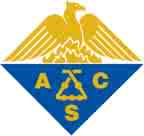 Symposium
of the
ANALYTICAL DIVISION
Symposium
of the
ANALYTICAL DIVISION

Department of Chemistry, SUNY-Potsdam Slide 1 2 3 4 5 6 7 8 9 10 <<< >>>
Presented at:
The National Meeting of the American Chemical Society
Boston, MA, August 22-26, 2010
 Symposium
of the
ANALYTICAL DIVISION
Symposium
of the
ANALYTICAL DIVISION

1. Novel antibody-based nanostructured biosensors for glutathione oxidative-stress biomarker
Zachary Reed, Robert Wallace, Sara Cutler, Magdalena Stobiecka, and Maria Hepel, Department of Chemistry, State University of New York at Potsdam, 44 Pierrepont Ave., Potsdam, NY 13676, Fax: 315-267-3170, hepelmr@potsdam.edu
|
Abstract. A fundamental role in the redox homeostasis and signaling processes associated with cell apoptosis is played by the biomarker of oxidative stress glutathione. It has been found that under oxidative stress, the concentration level of free GSH is diminished and there is evidence of increased frequency of autism, diabetes and other diseases associated with this. In this work, we have investigated novel biosensor designs and assays for the determination of GSH, including molecularly templated piezosensors, GSH-induced gold nanoparticle assembly with plasmonic absorbance or light scattering detection, fluorescence, and nanostructured antibody-based biosensors. The GSH immunosensors were designed on a quartz crystal piezoelectrode wafer for precision nanogravimetric mass change detection as well as on a dual microsensor platform enabling for simultaneous resistance and capacitance monitoring. The characterization of the sensors was performed using acoustic AFM, TEM, UV-Vis spectroscopy, resonance elastic light scattering spectroscopy (RELS), and electrochemical quartz crystal nanogravimetry (EQCN). |
|
 |
Figure 1. Cyclic voltammograms for a 1 mM K3Fe(CN)6 test solution recorded after subsequent steps of the positive potential barrier immunosensor construction: (1) bare gold piezoelectrode and (2-5) gold piezoelectrode after immobilization of successive layers of: (2) 6-amino-1-hexanethiol, (3) monoclonal anti-GSH antibody, (4) bovine serum albumin, (5) glutathione-capped AuNP; v = 100 mV/s. |